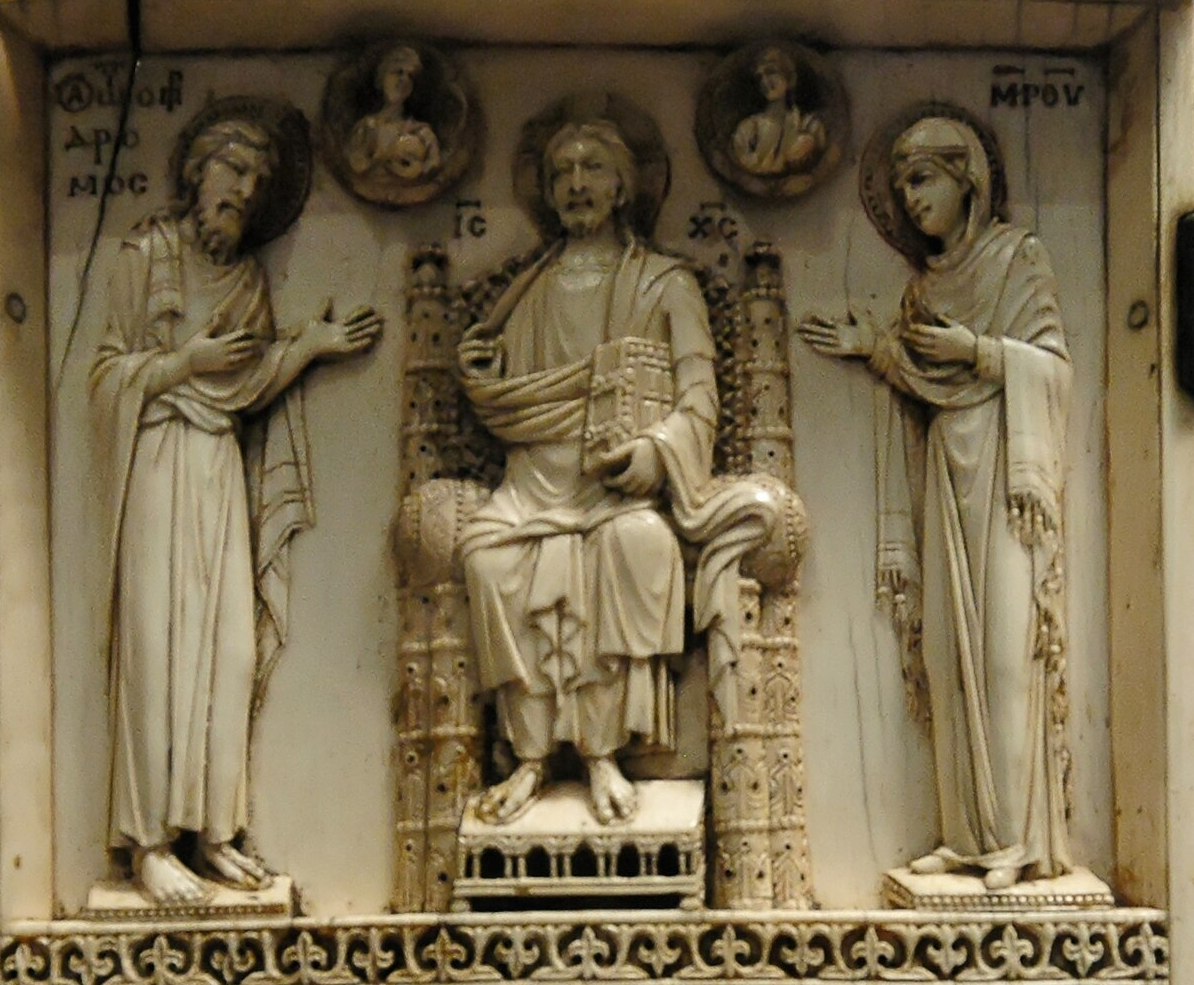 |
| (Image source) |
Typically, when one thinks of Byzantine or Eastern Christian art, we tend to think very much in terms of painted works, not sculptural one's, but of course this is more indicative of the direction Byzantine art would take in the second millennium and it is not necessarily representative of the first millennium which saw far more use of sculptural details within their church decoration. An example of just such a thing can be found at the Byzantine and Christian Museum of Athens where we can find a portion of an architrave taken from the templon, originally found in the Vlatadon Monastery in Thessaloniki, on display.
Now I realize that I likely just threw a number of architectural terms out there than may need some explanation. The "templon" is the (Anglicized) Greek word that refers to the barrier that separates the nave from the chancel -- in other words, what we would tend to refer to in the West as a balustrade or chancel screen -- while the 'architrave" is the horizontal beam that forms the top of this barrier. The best way to visualize this is to look at San Maria in Cosmedin in Rome which still has the same type of 'templon' that a piece such as that which we are looking at today would have been taken from:
Specifically we are discussing this piece (see the coloured portion); this is the architrave of the templon:
In this particular instance, what have is a remnant of the marble architrave of the templon which was found originally in the monastery of Thessaloniki in question; it shows to use three carved reliefs which depict the apostles St. James and St. Philip as well as the evangelist St. Luke.
These images were done in the second half of the tenth century (i.e. circa 950-999 A.D.) using a technique called "champlevé" and they also originally included encaustic designs (encaustic designs use hot wax mixed with coloured pigments which are then applied to the surface). As such, while today these images are monochromatic, in their heyday they would have been a mixture of marble, carved relief work and colourful encaustic designs. While we have lost these designs to the ravages of time, a closer look will reveal that you can still make out at least some of the designs of the saints faces as well as a few other remnants of the clothing.
 |
| St. James |
 |
| St. Philip |
 |
| St. Luke |
Originally these three saints would have formed a part of a greater whole, specifically the Deesis, which typically involves a row of saints that lead up to a central depiction of Christ with the Virgin Mary and St. John the Baptist to either side.
 |
| A carved ivory Deesis from 10th century Constantinope |
An example of this from a much later period can be seen here:

The Byzantine and Christian Museum of Athens have portions of a different marble templon on display there which may help our readers to better envision how this particular remnant might have appeared when it was part of its original screen:
All of this is a good reminder that while Byzantine and Eastern Christian art is, in more recent centuries, mainly characterized by its painted iconographic works, it wasn't always or exclusively so, most particularly when we begin looking back toward the first millennium.
-------
Do you like Liturgical Arts Journal's original content? You can help support LAJ in its mission and vision to promote beauty in Catholic worship either by:
You choose the amount! Your support makes all the difference.
















